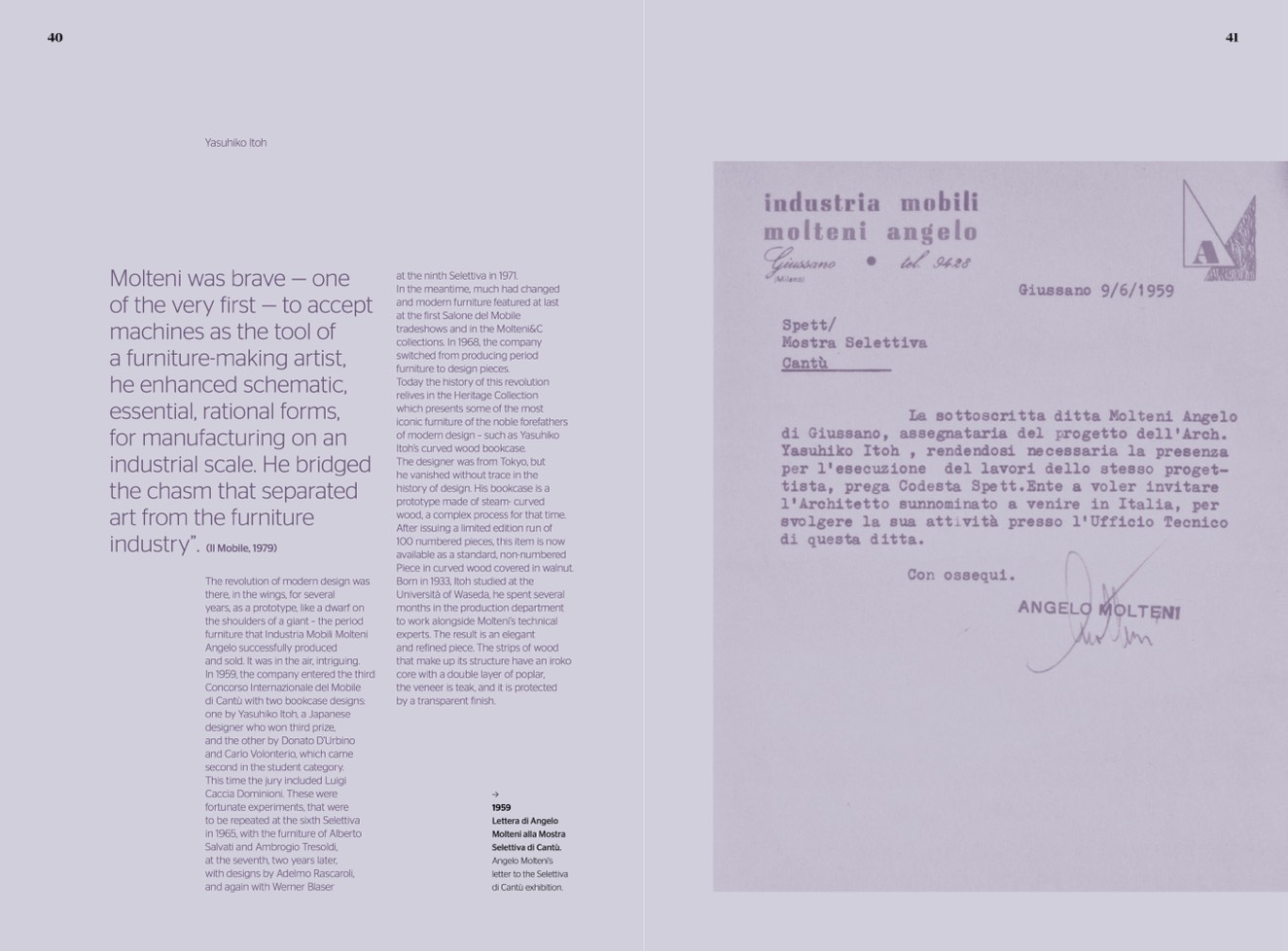
40
Yasuhiko Itoh
Molteni was brave — one
of the very first — to accept
machines as the tool of
a furniture-making artist,
he enhanced schematic,
essential, rational forms,
for manufacturing on an
industrial scale. He bridged
the chasm that separated
art from the furniture
industry”.
at the ninth Selettiva in 1971.
In the meantime, much had changed
and modern furniture featured at last
at the first Salone del Mobile
tradeshows and in the Molteni&C
collections. In 1968, the company
switched from producing period
furniture to design pieces.
Today the history of this revolution
relives in the Heritage Collection
which presents some of the most
iconic furniture of the noble forefathers
of modern design – such as Yasuhiko
Itoh’s curved wood bookcase.
The designer was from Tokyo, but
he vanished without trace in the
history of design. His bookcase is a
prototype made of steam- curved
wood, a complex process for that time.
After issuing a limited edition run of
100 numbered pieces, this item is now
available as a standard, non-numbered
Piece in curved wood covered in walnut.
Born in 1933, Itoh studied at the
Università of Waseda, he spent several
months in the production department
to work alongside Molteni’s technical
experts. The result is an elegant
and refined piece. The strips of wood
that make up its structure have an iroko
core with a double layer of poplar,
the veneer is teak, and it is protected
by a transparent finish.
1959
Lettera di Angelo
Molteni alla Mostra
Selettiva di Cantù.
Angelo Molteni’s
letter to the Selettiva
di Cantù exhibition.
(Il Mobile, 1979)
The revolution of modern design was
there, in the wings, for several
years, as a prototype, like a dwarf on
the shoulders of a giant – the period
furniture that Industria Mobili Molteni
Angelo successfully produced
and sold. It was in the air, intriguing.
In 1959, the company entered the third
Concorso Internazionale del Mobile
di Cantù with two bookcase designs:
one by Yasuhiko Itoh, a Japanese
designer who won third prize,
and the other by Donato D’Urbino
and Carlo Volonterio, which came
second in the student category.
This time the jury included Luigi
Caccia Dominioni. These were
fortunate experiments, that were
to be repeated at the sixth Selettiva
in 1965, with the furniture of Alberto
Salvati and Ambrogio Tresoldi,
at the seventh, two years later,
with designs by Adelmo Rascaroli,
and again with Werner Blaser
41

